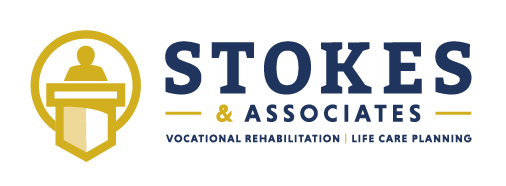Attendant Care in Life Care Planning
When developing a life care plan for catastrophic injuries, attendant care may be warranted and recommended by a treatment provider to bridge the gap of functionality caused by the indexed incident. There are tiers of attendant care depending on the patient's level of need, and it is helpful to understand the services each provider can appropriately provide. Each level of care will have a different impact on the overall lifetime cost in a life care plan. See below from least to most involvement:
Personal Care Aide (PCA)/Caregiver:
Educational requirements: none
Training requirements: varies by state (some states have no requirements)
Work setting: typically, within the homes of individuals
Duties: assistance with activities of daily living (ADLs), light household chores including meal preparation, accompaniment to doctors' appointments
Home Health Aide (HHA):
Educational requirements: none
Training requirements: minimum of 75 hours depending on the state plus certification exam
Work setting: typically, within the homes of individuals
Duties: ADL assistance, measures and charts vital signs, administers medications, wound care, etc.
Certified Nursing Assistant (CNA):
Educational requirements: high school diploma/GED
Training requirements: minimum of 75 hours depending on the state plus the passing of certification exam
Work setting: typically within nursing/residential care facilities and medical facilities
Duties: ADL assistance, communicates/alerts emergencies to nurses, measures and charts vital signs, tends to equipment such as pumps, dressings and catheters, etc., works under the supervision of a registered nurse (RN) or nurse practitioner (NP).
Licensed Practical Nurse (LPN):
Educational/training requirements: high school diploma/GED plus graduation from an accredited LPN program and passing of NCLEX-PN exam
Work setting: typically within residential care facilities and medical facilities, and in-home health
Duties: measures and charts vital signs, wound care, administers medications/injections/immunizations, tube feedings, etc., and works under the supervision of RNs, NPs, physicians, or other superior figures depending on state requirements.
Registered Nurse (RN):
Educational/training requirements: at least an associate degree plus the passing of NCLEX-RN
Work setting: typically, nursing care and medical facilities
Duties: administers medications and treatments, creates and maintains medical records, and oversees and collaborates with other treatment professionals when/as applicable.
As educational, training, credentialing, and task requirements increase, so do the costs of services. According to the U.S. Bureau of Labor Statistics 2021, national hourly rates for PCAs and HHAs range from $10.72 to $17.79 per hour. For CNAs, hourly rates range from $11.48 to $21.27 per hour. For LPNs, hourly rates range from $17.86 to $30.67 per hour. For RNs, hourly rates range from $28.58 to $58.71 per hour.
When a treating physician recommends attendant care, the life care planner will confirm the level of care needed, the required hours per day of assistance, and if the number of hours per day would increase with age/time. In addition to the life care planner consulting with the treating physician concerning attendant care, a clinical evaluation with the evaluee (or another individual who can speak on their behalf) is essential to understand their limitations and subsequent needs to determine the level of care that is appropriate.
